Exhibition Archive
Throughout our galleries we have exhibited a range of diverse artists.

Unlocking the World
Inspired by the pedagogical approach of Reggio Emilia, SENsory Atelier sees young people in SEND schools as experts in their own lives and learning journeys, working collaboratively with artists and educators to explore creativity and unlock the wider world.
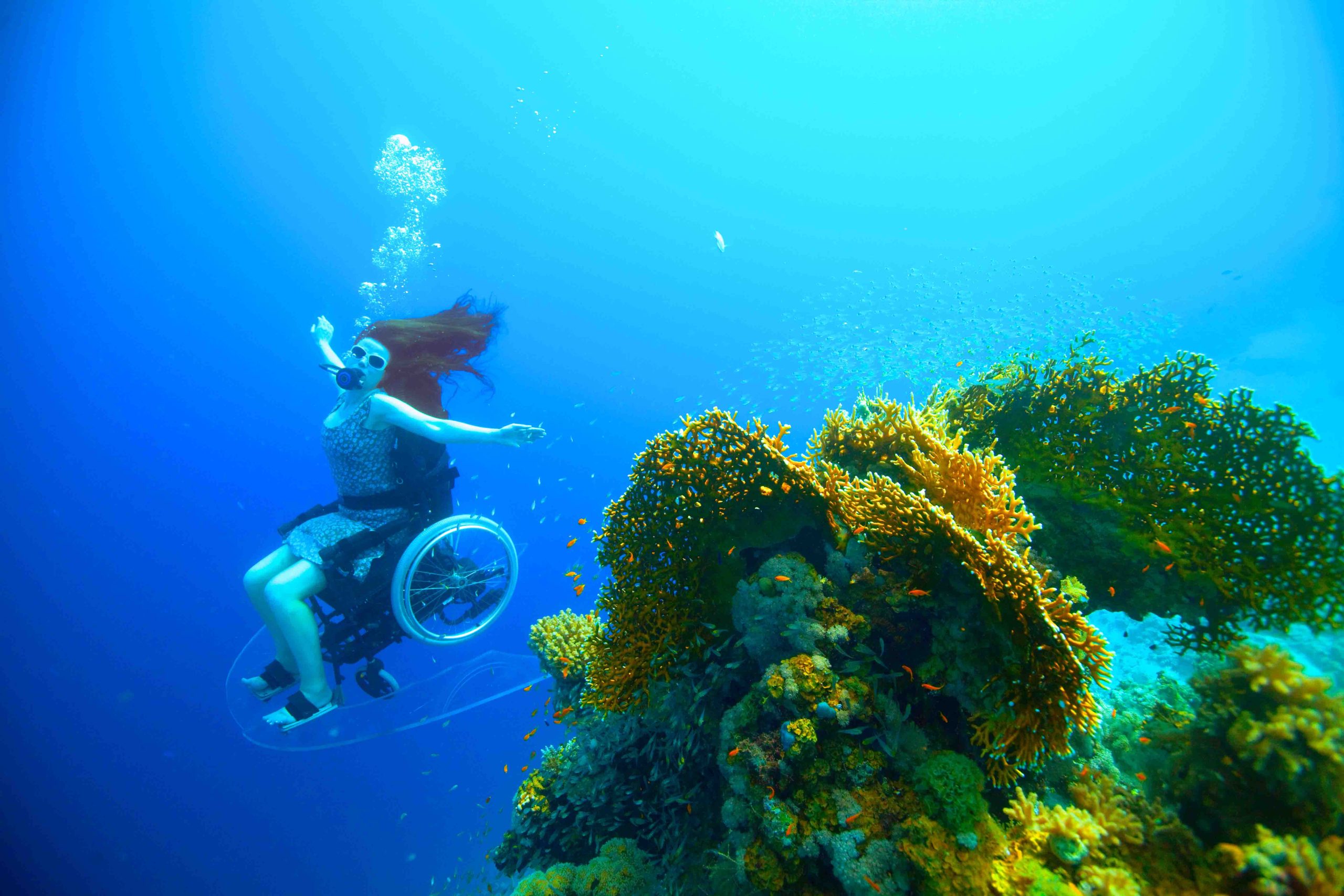
Traces
This was the start of an exciting collaboration with Ash Field Academy, a school for children with special educational needs and disabilities in Leicester. In 2023 she returned to the school, this time with Morgan Stockton, Director of Seeds and Dreams, as co-producer along with a number of art activists, some disabled. Together they facilitated ten intensive sessions of wheelchair printing and giant mark making.
Children and young people, ages 4 to 19, were invited to print from their wheelchair wheels, as well as being offered a myriad of art tools to create with; all inspired by the traces made by the motion of rolling. A selection of these vibrant and dynamic artworks were shown at Attenborough Arts Centre alongside the works of four ‘grown-up’ contemporary artists.
These contemporary artists were selected for their potential to inspire young people to explore beyond the perceived limitations of disability, they were asked to offer work in response to the children’s creative journey, to explore the concept of traces, the traces that are left behind, and the traces that are made through motion. The works included new commissions, co-produced projects and several significant loans.
Artists
42 children and young people from six separate classes of Ash Field Academy, Leicester.
Sue Austin – a multimedia, performance and installation artist with a socially engaged practice shaped by, and emerging from, her experience of disability. As Artistic Director of Freewheeling she “recognises the power of starting at the ‘personal’ and finding archetypal, numinous images that ‘communicate’ through connecting with the universality of human experience.” She aims to find dramatic and powerful ways to reveal the ‘Hidden Secret’ of disability, arguing that this ‘secret’, if explored, valued and then shared, can act to heal the divisions created in the social psyche by cultural dichotomies that define the ‘disabled’ as ‘other’. ‘Creating the Spectacle!’ presents a ground breaking series of live-art and video works of an underwater wheelchair and work is in development to extend this artwork into another dimension by taking to the skies in a wheelchair that both flies and dives. Traces will feature films and stills from Sue Austin’s ‘Creating the Spectacle!’ and more.
Daryl Beeton – a Director and Performer who has worked extensively within the Theatre, Disability and young people’s arts sector for the last 25 years. He is a recognised cultural leader in youth arts participation as well as a high-profile advocate for disabled artists. The core of all of his work has been a belief that arts can enrich our lives and those of the communities we inhabit. Daryl is an active advocate for improving the rights of disabled and vulnerable people by promoting access and inclusion within the arts.
Laura Dajao – a Filipina wheelchair Freelance Integrated Dance Artist influenced by Hip Hop, Contemporary, Dancehall, Waacking and Locking. Based in East London, she has trained and performed with East London Dance, Candoco, Moxie Brawl, Gloucestershire Dance, Casson & Friends and Stopgap across various platforms around the UK. Independently, she looks to make cross collaborative art-form work with different artists, both locally and internationally.
Daryl Beeton and Laura Dajao will be performing a dynamic duet (involving paint!) as part of the Traces programme on April 7 2024. Details tbc. A film of their performance will then be shown within the exhibition.
Aminder Virdee – a South Asian transdisciplinary, multi-artform and STEM artist; arts facilitator; writer; filmmaker; consultant; community creative justice facilitator; founder of DIVA (Disabled Intersectional Voices in the Arts), and a Trustee at UK’s leading disability-led live music accessibility organisation Attitude is Everything. Exhibiting her work since 2008, her work is steered through an intersectional, autoethnographic, disability justice, crip technoscience, decolonisation, and magical realism lens. This kaleidoscopic lens is rooted in the reclamation of her quadruple-marginalised identity, lived experiences, and bodymind from countless systems of power and their associated gazes. Her work serves to challenge and disrupt conventional social norms and perceptions of normativity, neurotypicality, mobility, productivity, and prescribed ways of being in the world.
Aminder Virdee is making a commissioned sculptural piece to be revealed on February 22 at the launch.
Joseph Wilk – A London born artist who uses computers to explore disability and disability to explore computers. He works with automative forms of expression that utilise new interfaces to work *with* alternative bodies. His experience of disability – living with pain, physical limitations, disillusionment and disconnection – strongly impacts his practice. He deconstructs, misuses and repurposes software and hardware to challenge notions of ownership, narrative and visibility.
Joseph Wilk is working with local wheelchair users exploring movement within the gallery to create a collaborative digital drawing to be projected in the space.
The work with children and young people was supported using public funding by the National Lottery through Arts Council England and received sponsorship in kind from Bromakin Wheelchairs.
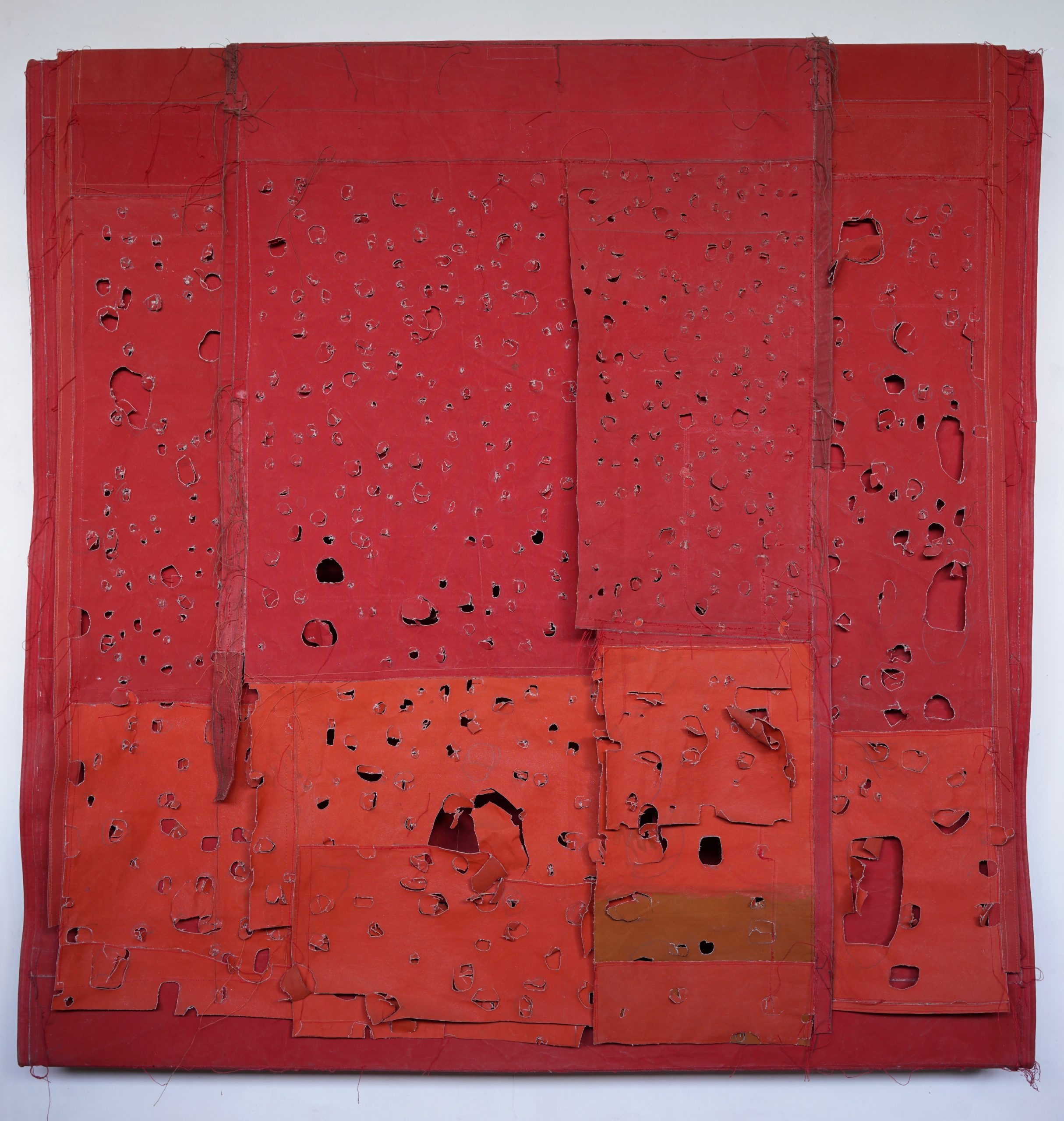
Arcadia for All? Rethinking Landscape Painting Now
‘Arcadia for All?’ featured a wonderfully broad spectrum of artworks by over thirty artists, including Hurvin Anderson, Andrew Grassie, Lubaina Himid, Matthew Krishanu, Elizabeth Magill and George Shaw. They all approached nature from many different directions, expanding the notion of landscape painting in new, unexpected and sometimes radical and playful ways. Moreover, the exhibition celebrated the vitality and variety of contemporary painting in all its materiality and visual richness.
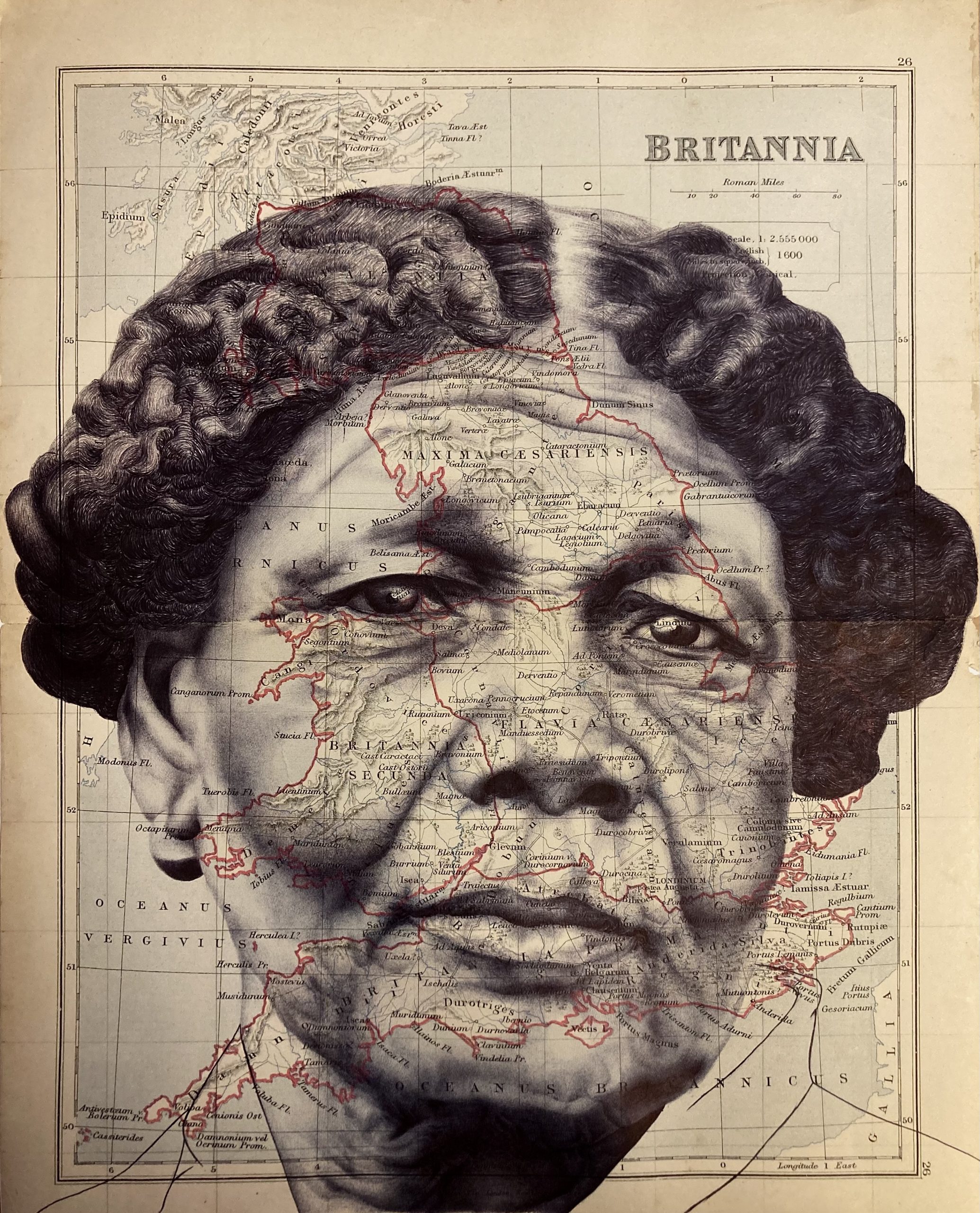
Habib Hajallie: Black Pen Portraits
Habib specialises in the use of a monochrome medium: the black ballpoint pen, to celebrate Blackness, which enables him to somewhat paradoxically show that there is more to a person than just the colour of their skin. He builds layers of tone with delicate mark making methods as he also looks to celebrate authentic drawing within the digital age.
Habib is an elected member of The Royal Society of British Artists, the winner of The UK New Artist of The Year Award 2022 and an honouree on Forbes’ prestigious 30 Under 30 list 2023.
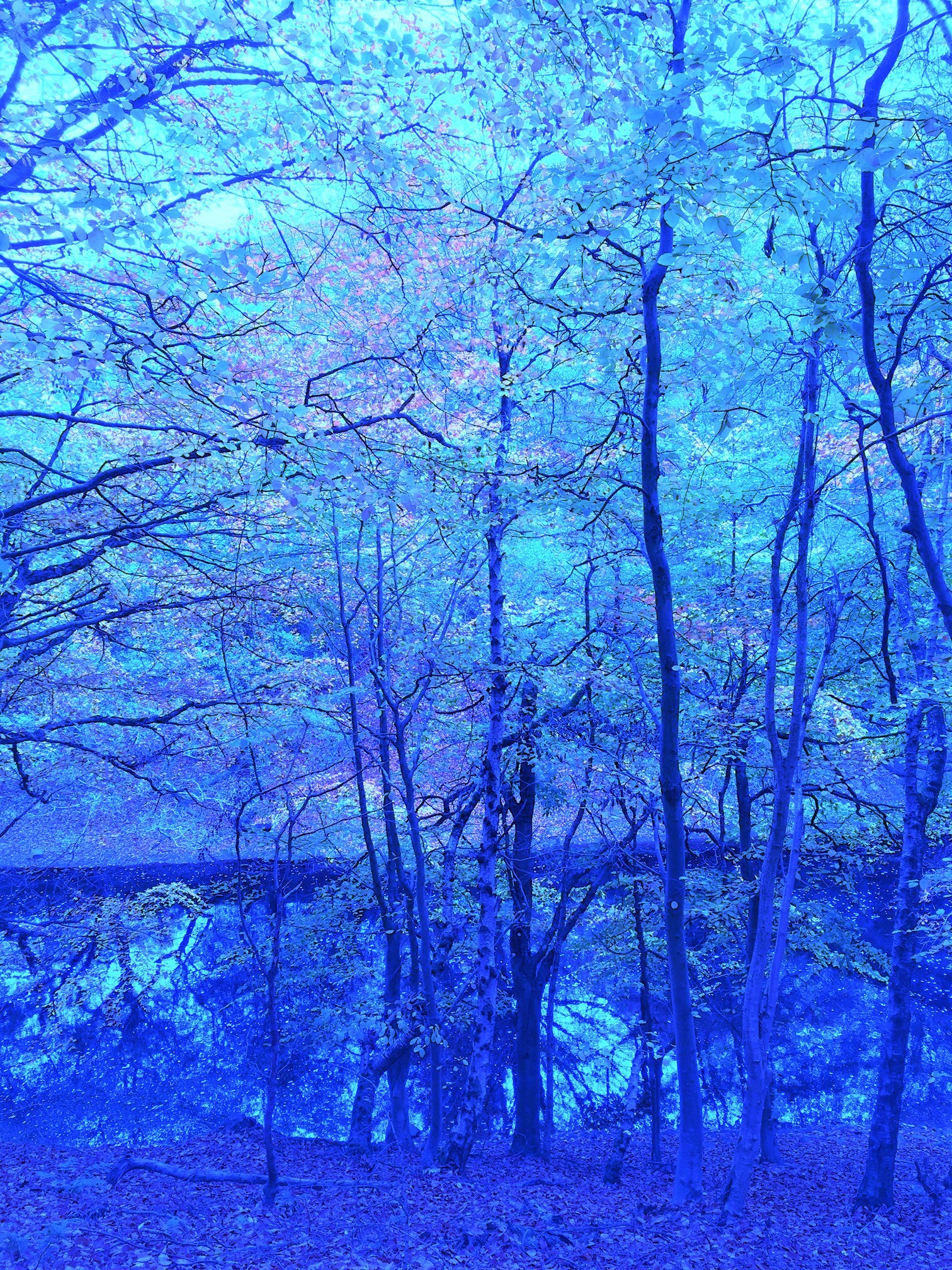
Joanna Holland: Out of the Blue: Landscapes of Chronic Illness
The artworks in this exhibition share very real experiences of diagnosis, medication, side effects, chronic fatigue, hospitalisation, and the impact of [in]visible disability on family life. They also explore an interconnectedness with nature, and the complex entanglements between self, planetary health, climate change and biodiversity loss.
Sometimes the beauty is in the shadows and the horror in the everyday.
Visit Joanna Holland’s website by clicking here to explore more work.
Covid Changemakers: The Extra Mile
Over two weeks in October 2022 Alice worked with over 40 of the nominees coming from all areas of the university, students, the Student Union, academics, professional services along with Estates and Campus Services. The portraits were all taken on campus with the locations chosen to reflect the differing roles that the nominees undertake. Each sitter was also offered the opportunity to be recorded talking about their COVID experience, to add another layer of context to the exhibition. The recordings have been accessioned into the local history archive as a permanent record of the pandemic, while the photographs themselves have been added to the University Art Collection as a permanent reminder of the pandemic.
The exhibition also showcased the work of diverse colleagues behind the University’s world-changing research undertaken during the pandemic, much of which continues to have an impact on the treatment and prevention of Covid today.
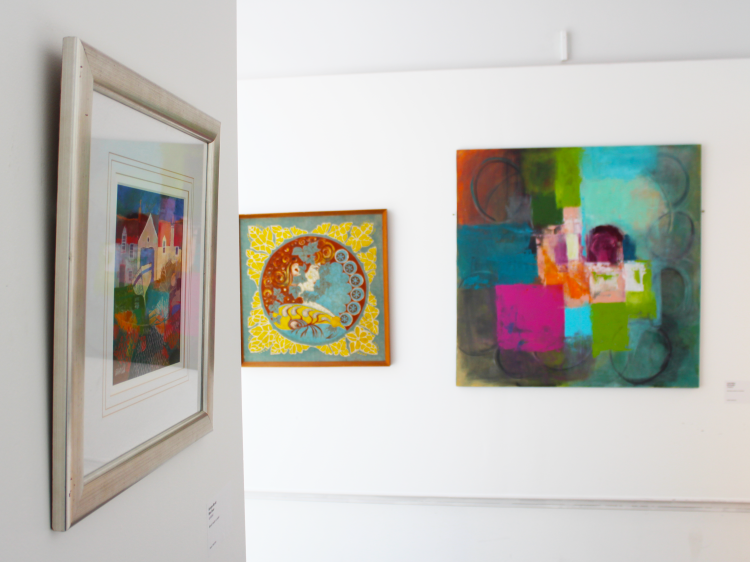
The Patel and Ellis Collections
The first collection belonged to George Lewis Ellis. Born and raised in Oadby, Leicester, Ellis is a full-time plastic surgeon, with his own private practice, established three generations prior by his great-grandfather, William Ellis. Ellis claims his most prized possession is his priceless and exquisite art collection that was left to him following the death of his father. Through the collection, he continues his family legacy and is reminded of their history of multi-generational support for the arts.
The second collection belonged to Demi Patel. Born and raised in Leicester, Demi flourishes in her job as a secondary school teacher, intent on sharing her love for literature and the arts with her students. One of Demi’s great loves is her art collection. She refers to her collection as a passion project born out of love, charity shops, markets, gifts and the irresistible attraction of playful, vibrant and unique art, especially from local, Leicester-based/raised artists.
The Patel and Ellis Collections became possible with ArtFund support and was developed, curated and marketed by Art Fund students working at Attenborough Arts Centre.
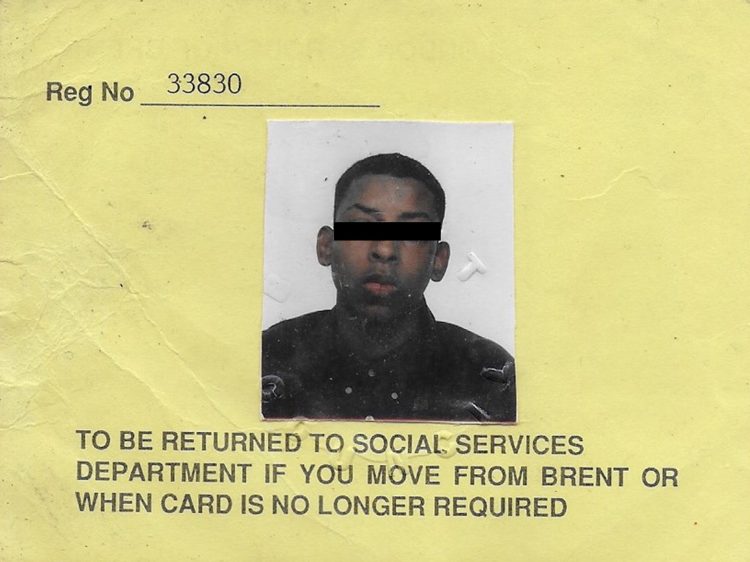
Christopher Samuel: The Archive of An Unseen
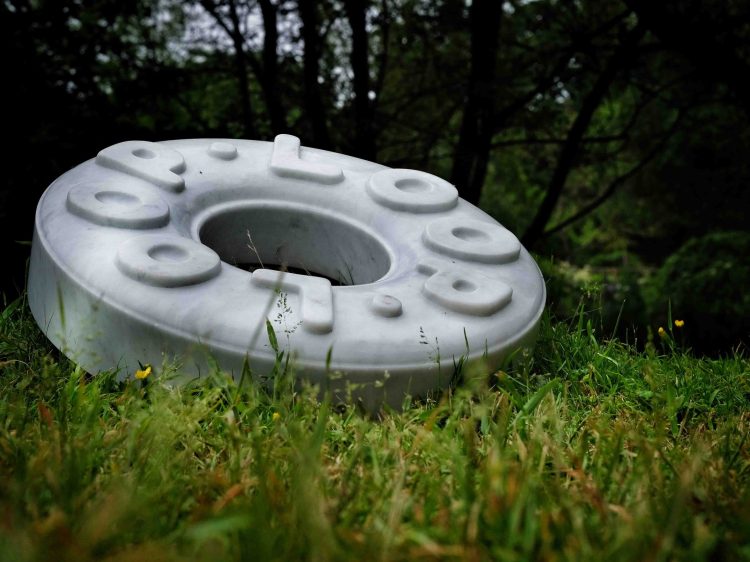
Tony Heaton: altered
“I am almost always reminded that I am perceived as a disabled person, and much of my work explores my personal analysis of these everyday interactions.” – Tony Heaton
Born in Lancashire, Tony Heaton has exhibited nationally and internationally, with his work included within public and private collections across the UK. Some of his artworks directly relate to his disability activism, for which he was awarded an OBE in 2013 for his services to the arts and disability arts movement. This includes ‘Shaken not Stirred’, a pyramid of charity collecting cans into which Tony threw a prosthetic limb on live television as an act of protest. In recognition of his work, Heaton also holds honorary doctorates from both the University of Leicester and Buckinghamshire New University.
altered is presented in partnership with Bury Art Museum and Sculpture Centre who have produced a catalogue to accompany the exhibition supported by the Henry Moore Foundation, which is available to buy from the shop. We will also have a brand-new sculpture for sale: a wall-mounted version of Heaton’s Suite sculptures, offered in a limited edition of 25 in various colours. ‘Sliced: Fruits’ is new and available exclusively at a special price from Attenborough Arts Centre for the duration of the exhibition.

Jas Singh: hippocratic / hyprocrite
Life changes in 2014 resulted in neurological complications forcing him to take a hiatus. In 2018 he returned to the arts and reconfigured his method of practice from audio dissonance to considering visual overload with the same intent.
Recently Jas has been performing his work S A B O T A G E via live online streams to assail the audience – who are placed within the spectacle of a news culture that reflects and amplifies the chaos of contemporary politics and events.
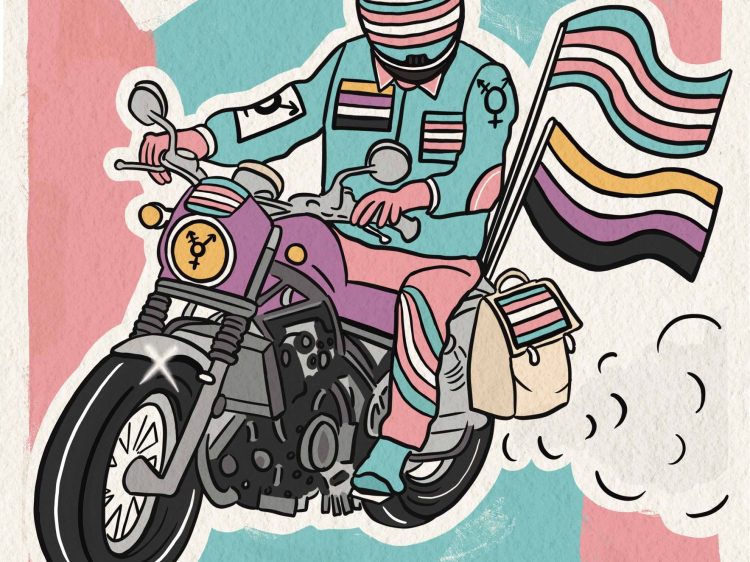
Trans Post Project Archive
Artwork: Rebel with a Cause by Fox Fisher

Mohammad Barrangi: Playing in Wonderland

Letty McHugh: Anchorage

Bruce McLean: Black Garden Paintings
Bruce McLean’s garden paintings are inspired by the beautiful, vibrant garden his wife Rosy has created at the couple’s home on the Spanish island of Menorca. The works showcase McLean’s virtuoso technique and dazzling use of colour – hot pinks, cobalt blues, and deep oranges vivid against a dark background. Monumental in scale the paintings hover somewhere between reality and abstraction with hints of pathways, ponds, flowers, and shrubs.
As his inspiration, McLean considers the garden as a ‘moving sculpture’. Bursting with foliage and flowers, the outdoor space is constantly transforming. He has been investigating the condition of sculpture since the late 1960s, creatively interrogating the possibilities and meaning of sculpture in an extraordinary range of media including performance, installation, public art, printmaking, photography, film, ceramics, printmaking, and painting.
“Everything I do comes from the fact that I am a sculptor, although some of it looks like painting, some of it looks like poetry, some of it looks like dance.”
Brought to you by Bruce McLean’s Black Garden Paintings at Attenborough Arts Centre, we hosted the Garden Art Challenge. Through social media we presented 3 creative tasks over the summer to inspire creativity at home, in garden’s and outdoor spaces.
On the first Monday of the month during the exhibition a new task was announced. On each last Friday of the month the works were showcased on our socials and on the Bruce McLean Exhibition page, with a chance to win 2 free tickets to an upcoming performances.
Take a look below at submissions from all three of our challenges.

Making Solid: Unpredictable Bodies
Making Solid: Unpredictable Bodies explores what an unpredictable body is and how a disabled body’s presence transgresses societal restrictions. The project investigates how movement can be made solid, and Metz is interested in the relationship between sculpture, mark-making and stimming. The artist uses drawing as a form of stimming, a common process used by autistic and neurodivergent people to self-regulate their emotions using repetitive movements or sounds to manage feelings of being overwhelmed, but importantly, can also express a range of emotions such as joy.Using drawing as a form of stimming and choreographic objects, the artist creates their own visual language to explore alternative, non-verbal communication that comes from neurodivergence, and which is often dismissed, devalued and stigmatised in mainstream society.
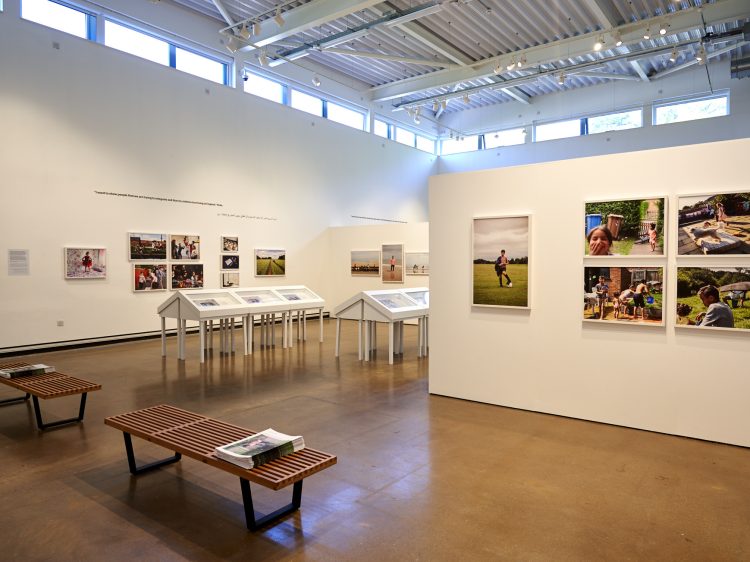
In Which Language Do We Dream?
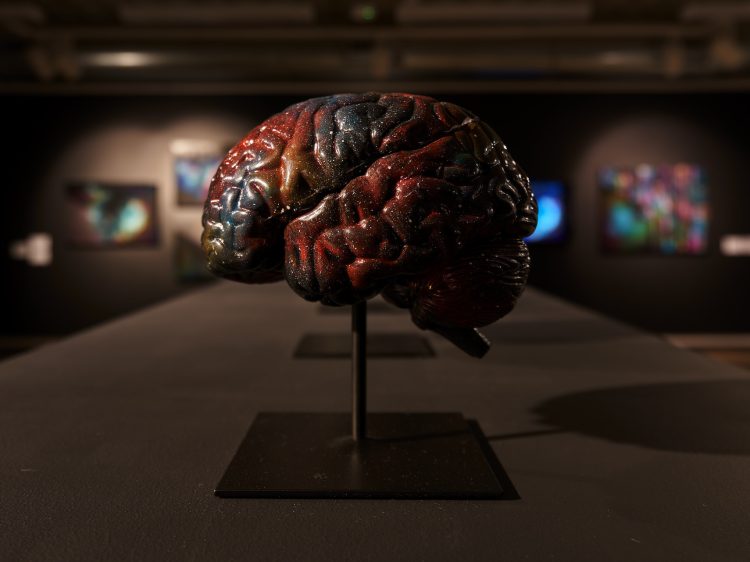
Loz Atkinson: The Edge of Forever
Inspired by Carl Sagan’s thirteen-part television series ‘Cosmos: A Personal Voyage’ (1980), the ‘Imagined Nebula’ works grapple with the problem of how to accurately represent something so vast that it is almost impossible to measure or understand, especially when we are a fundamental part of it. The paintings that make up this series portray scenes of an imaginary cosmos, complete with starry constellations and jewel-coloured nebulae.
On public display here for the first time is a new work titled ‘The Cosmos Within’, which consists of 12 life-sized, anatomical models of the human brain. Each model has been painted with different coloured nebulae which Loz has chosen to represent the 12 traceable elements which make up the human body. Nebula are huge clouds of gas and dust that give form and life to everything on Earth. These 12 elements are found both in vast and unfathomable cosmic phenomena as well as the tiniest microscopic particles and forces that hold everything together.
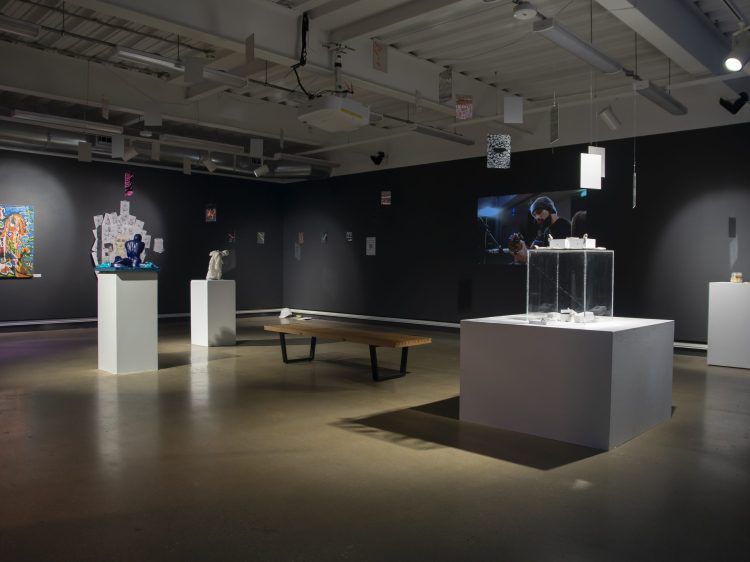
SEE ME AS ME
Running from 2021 until 2025 and supported by the Paul Hamlyn Foundation, Where we are… aims to help give young people agency within their own local communities by creating three cultural projects a year as part of the British Museum’s National Programmes. It encourages young people to interpret what arts and culture mean to them, their families and local communities thereby supporting and developing their skills and experience.
A fully funded programme, it also intends to help bridge barriers that prevent young people from engaging with arts and culture locally by working collaboratively with local organisations responding to a community need. Working in a four-way partnership with the British Museum, local charities and cultural spaces, Where we are… ultimately aims to connect with young people who are currently under-served by the cultural sector.
SEE ME AS ME features a mix of film, sculpture, creative writing and music – all created and curated by the team of young adults, with support from the creative team of Attenborough Arts Centre and Pedestrian. The exhibition explores issues of identity and the reality of LGBTQIA+ bodies, celebrating both the nuanced experiences and embracing the power of the collective. The team of young curators explain the concept as an invitation to see yourselves as you really are, with no labels, inhibitions or constraints.

The World is a Work in Progress: Ama Dogbe Responds
Ama Dogbe is a British-Ghanaian digital artist whose work engages with a range of personal and societal themes through digital mediums including experimental film, animation and video games. Continuing her recent work using interactive virtual world building as a tool to explore modern challenges and dilemmas, Ama has been commissioned by Attenborough Arts Centre to respond to the theme of our current exhibition, ‘The World is a Work in Progress’.
Ama has constructed a gleaming circular platform, in which visitors can meander between five exhibits. Digital sculpture and experimental film invite us into the all corners of the internet, from trending articles on Wiki-how that serve as a snapshot of this moment in time, to a distorted version of the artist’s own search history that reflects on our relationships with and illusions of privacy and control. Peering down on Google Earth offers perspectives on remoteness, connectivity and randomisation, whilst other films show forms of human and machine labour. These clips are not only commonplace, view-generating newsfeed content, but – amid crises of housing and hunger and a cultural resurgence towards older, slower ways of working – a contemplation of what is man-made, what is machine made, and what is destroyed.
This work is made available as part of Leicester Art Week, intended to increase access to the festival for those unable to attend in-person events at this time. Whether it connects or invades our lives, Ama Dogbe’s work offers us space to reflect on the internet; a world-building work in progress that spans the utopian, dystopian and somewhere in-between.
Created by Ama Dogbe
Sound produced by Louis Jack
Technical support by Kwame Dogbe
Part of Leicester Art Week.
How to play
Before you start
- Make sure you use Chrome, Firefox or Edge browsers. The game will not run on Safari.
- The game requires a keyboard and mouse/touch pad
To play
- Click the ‘run game’ button, click full-screen button
- Click inside the game (this will hide the cursor).
- Use the arrow keys to move and move the mouse to look around
- Follow the platform and venture through the archways. This ‘game’ has no end – play and observe for as long as you like.
To exit
- Press the escape (‘Esc’) button on the keyboard. The cursor will reappear.
- Press the escape (‘Esc’) button to exit full-screen

MY LAND YOUR LAND
Visit our gallery space for the full exhibition, an audible and visual exploration into the idea of home.
Please pick up an audio player, sit down, relax and enjoy the short stories of the young people’s experiences of home in their own words.
After you have listened to MY LAND YOUR LAND, we invite you to fill in one of the cards from the booth. You can post it in a drawer or take your card to reception and we will then add it to the growing collection in the café.
Tell us what you think — @2destlang #MyLandYourLand @AttenboroughAC
MY LAND YOUR LAND is part of University of Leicester’s Centenary Celebrations.
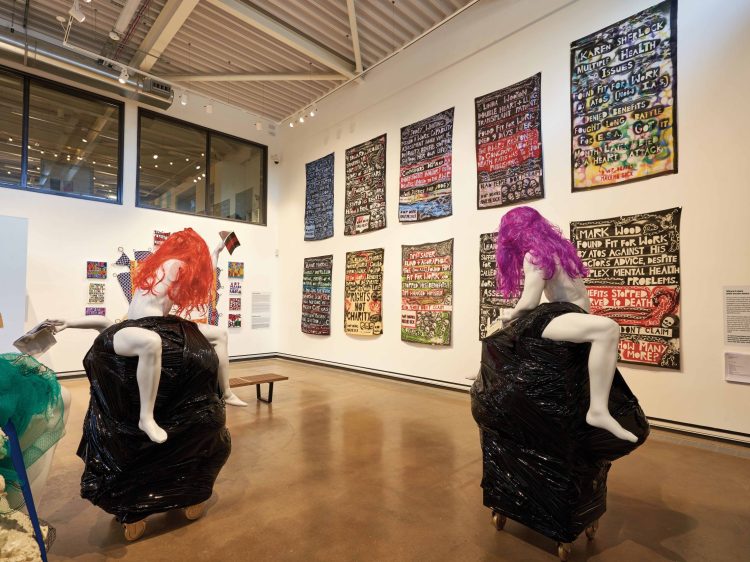
The World is a Work in Progress
The artists represented in the exhibition responded to these themes in markedly different ways, but their practices were connected by an interest in social and political activism, co-production and concepts of futurity. Some highlighted the inequalities and prejudice that exist in our societies today, acting as a call to action in the here and now. Other works explored a variety of possible futures and invited us to collaborate in imagining the future that we want for ourselves and our communities. If the world is a work in progress, what do we want to change? What might the next 100 years have in store?
The University of Leicester celebrated its centenary in Autumn 2021. It is no coincidence that the public fund that would go on to endow the University of Leicester was opened on Armistice Day in 1918. Then known as the University College for Leicester, Leicestershire and Rutland, the University College was envisaged as a ‘living memorial’ to the sacrifices of local people in the First World War. Leicester was to have, as the local paper put it, “more than a mere artistic war memorial”. The University motto ’Ut vitam habeant’ (‘so that they may have life’) stands as a permanent reminder on every publication and degree certificate issued since. We are the only European university founded as a memorial to the First World War, and one of only two anywhere in the world.
Participating Artists
Ruth Beale, Michael Forbes, Khush Kali, Vince Laws, Bob & Roberta Smith, Kai Syng Tan, Jessica Voorsanger.

Yambe Tam: Cosmic Garden
Yambe Tam (b.1989, US) is an artist based in London. She works across a wide range of media, from painting, ceramics and sculpture to video game design and virtual reality. Her practice is rooted in a deep interest in the evolution of consciousness which Yambe explores through the creation of contemplative, multi-sensory experiences. In the process of researching and making her work, Yambe regularly collaborates with specialists including composers, creative technologists and scientists.
In this exhibition, Metallic wormholes are suspended in the air above. They sing a ghostly chorus about the infinity of space: a faint siren song whose vibrations draw rippling columns that appear to grow from the mineral pool below. ‘Cosmic Garden’ is a birthplace of protean waveforms that shift between sound, light, and matter, and is a space that the artist invites us to enter and contemplate the transitory nature of things.
In creating ‘Cosmic Garden’, Yambe was particularly influenced by Japanese gardens, which are meticulously crafted according to particular aesthetics and philosophical ideas. These gardens are transitional environments designed to create a space for reflection upon the interconnectedness of life and the passage of time. Echoing the forms and function of the Japanese dry garden, ‘Cosmic Garden’ is a celebration of the formidable power and form of the natural world: from the depths of the oceans to the farthest reaches of outer space.
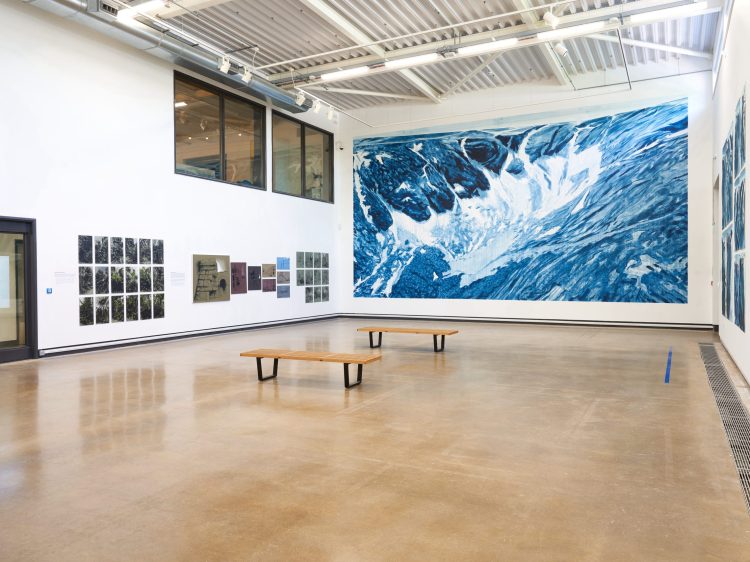
Mik Godley: Considering Silesia
Mik Godley is an artist and art school lecturer based in Nottingham. He is a painter who makes work using both traditional analogue painting techniques and digital iPad technology. His ongoing body of work ‘Considering Silesia’ was initiated in 2003, and explores the artist’s Anglo-German heritage, cultural memory, displacement and migration.
‘Considering Silesia’ observes the context of our evolving relationship with the internet, which increasingly enables us to virtually “visit” parts of the world and connect with strangers without leaving home. Despite having never visited his mother’s homeland, Lower Silesia, Mik’s work documents the landscape and architecture of the region through images, video footage and maps found online.
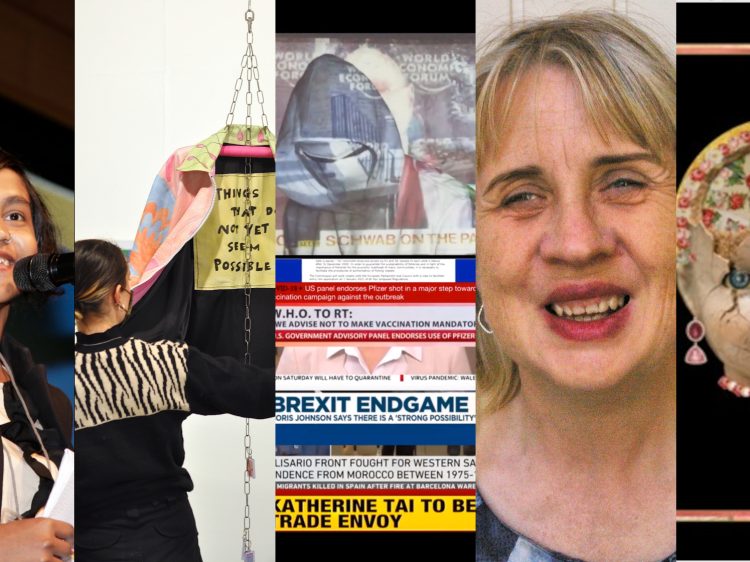
Visual Artist Support Commissions: Attenborough Arts Centre & Disability Arts Online
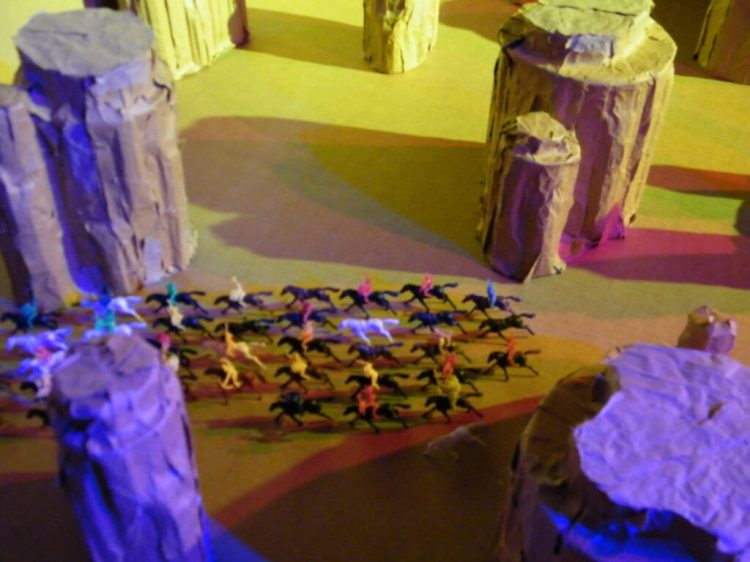
Tim Neath - Cowboys Invaded
Tim Neath has carefully crafted a sprawling model world using recycled cardboard and craft materials. The scenes are populated with dated vintage action figurines, set for an epic encounter on a miniature scale. Immersing the viewer in the imagery of Hollywood film, the piece unpicks the politics of the science fiction and Western genres, in particular the idea of Manifest Destiny: the belief that colonial expansion by American settlers was the will of God.
Tim Neath is an artist based at 2 Queens in Leicester and was commissioned by Attenborough Arts Centre to support him in the completion of this long-term project.

Graham Ensor - Meteorite Display
In connection with our main exhibition ‘Mariner 9’, local meteorite collector Graham Ensor has curated a display of meteorites and related artefacts in Gallery 3. With specimens from Mars and the moon, as well as local samples from the famous fall near Barwell village, these meteorites have stories to tell about the origins of the universe, and their disruptive descents to earth.
When a 4.5 billion-year-old meteorite exploded over the Leicestershire village of Barwell on Christmas eve in 1965, nine-year-old Graham gained a life-long passion for the subject. He now owns about 1,000 specimens, which experts believe could be the largest private collection in the UK. Many of the meteorites in Graham’s collection are of great scientific value and he regularly works with the Open University to make material available for research. He has generously loaned a selection for display in Attenborough Art Centre.

Kelly Richardson: Mariner 9
Created with software used by the film and gaming industries, and using data from NASA’s missions to Mars, Richardson has created a realistic representation of the Mars landscape covered by the debris of centuries of exploration. Despite the apparent abandoned state of the planet, some of the spacecraft continue to work, looking for signs of life.
Kelly Richardson (b. 1972, Canada) is one of the leading members of a new generation of artists using digital technologies to create hyper-real, highly charged landscapes. Recent solo exhibitions include Dundee Contemporary Arts, CAG Vancouver, VOID Derry and the Albright-Knox Art Gallery in Buffalo, New York. Her video installations have been included in presentations at the Toronto Film Festival and the Sundance Film Festival.

Justin Edgar: Reasonable Adjustment
The group Reasonable Adjustment, or RAD, were formed in 1989 in protest at the treatment of disabled people, and were active during the late eighties and early nineties. What made RAD unique was the advocacy of armed resistance in the face of what they saw as unfair treatment of disabled people by the right-wing conservative government of Margaret Thatcher.
Between 1989 and 1994 they carried out a series of attacks including a shooting at the BBC and the bombing of Euston Station. Reasonable Adjustment modelled themselves on other historical armed resistance movements and are comparable to direct action groups such as the Animal Liberation Front, however, no one was seriously injured or killed in their campaign of violence.
At the time of Reasonable Adjustment, Justin Edgar was a student at Portsmouth Art College. He first noticed graffiti depicting RAD’s distinctive logo when taking photographs for an assignment on the city environment. He began to document the movement and this exhibition presents items from his personal collection of the last thirty years as well as borrowed items.
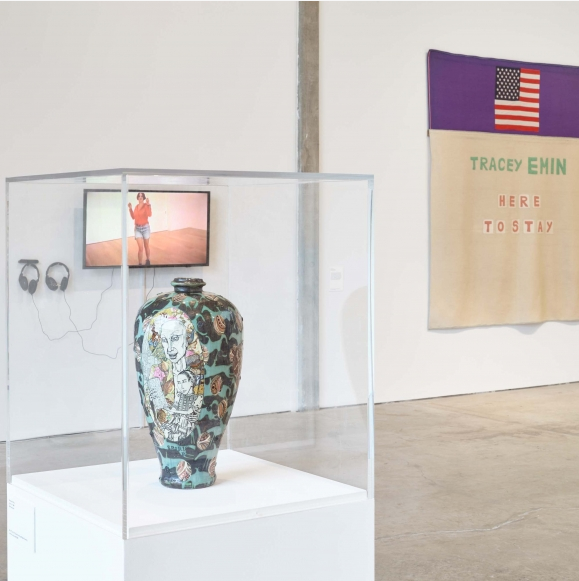
In My Shoes
Self-portraiture has been an enduring presence throughout art history; in recent years artists have revolutionised and extended the genre by incorporating action, performance, narrative and explorations of identity.
‘In My Shoes’ explores the ways in which artists based in the UK have represented themselves in their work since the 1990s. Encompassing a range of media including film, photography and sculpture, ‘In My Shoes’ draws primarily from the Arts Council Collection, with key loans from other UK collections, to investigate these dynamic approaches.
This exhibition offers a timely opportunity to consider the legacy of a key aspect of 1990s British art. The show begins with key early works by so-called ‘Young British Artists’ including Tracey Emin, Sarah Lucas and Gavin Turk, who received international attention for putting themselves in the frame with bold and confrontational works. The exhibition continues with the work of a younger generation of artists including Rachel Maclean and Bedwyr Williams who have each established an active role within their work. ‘In My Shoes’ concludes with some of the most recent works to enter the Arts Council Collection, some on public display for the first time since acquisition.
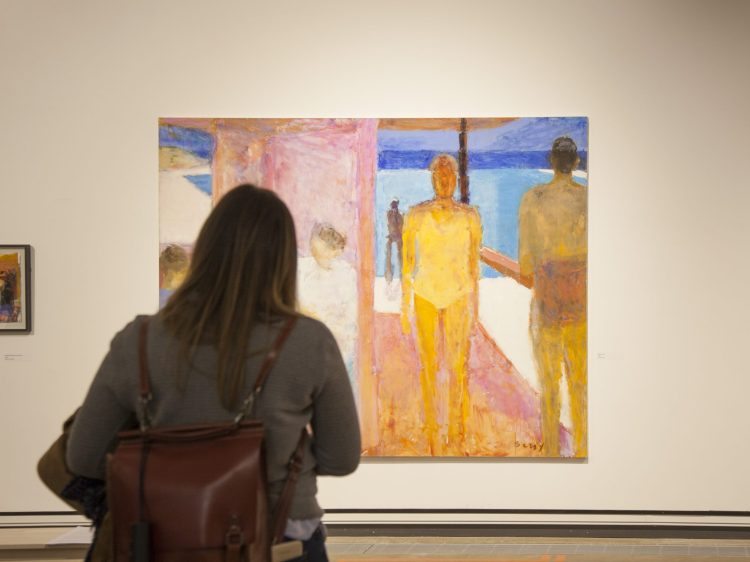
Sargy Mann: Let it be felt that the painter was there
Mann’s distinctive vision was deeply influenced by Bonnard and Cezanne but his paintings remain remarkably original. Affected by failing vision from the age of 36, Mann was compelled to find new ways of seeing and working – this creative liberation produced a celebrated body of work that continued after his total loss of sight in 2005. This exhibition, which has been developed in close collaboration with the artist’s family, is the largest public showing of Mann’s work to date and draws from all periods of his career. It includes an extensive collection of paintings and drawings, alongside never previously exhibited archival material, photographs and audio recordings that reveal fascinating insights into Mann’s practise.
The exhibition is centred around four groups of Mann’s work made over three decades – the Late Lyndhurst Grove Paintings, a series of works begun in 1988, depicting the interior of Mann’s home in Peckham and locations nearby; Mann’s house and garden at Bungay in Suffolk which he moved to in 1990; the painting ‘The Family at Breakfast, Borgo Place’ (2004) accompanied by supporting material showing Mann’s process; and a group of later works which depict scenes of figures, often bathers by infinity swimming pools. From the late 1980s Mann made audio recordings of his subjects and visitors to the exhibition can listen to several of these ‘audio sketchbooks’, paired with the paintings they documented.
A section of the exhibition focuses on the moment in 2005-6 when Mann lost his remaining vision. It shows three paintings including ‘Frances in the Pink Chair, Yellow Background’ which started Mann on a new way of painting. The works are shown alongside a film made by Mann’s son Peter during this time. Also on show are smaller works, drawings and sketchbooks which explore Mann’s need to understand the world through the act of painting and drawing. Material relating to his time as a teacher and his research into other artists is also on display. Mann devoted considerable time to the study of other painters, most notably Pierre Bonnard whose quote ”Let it be felt that the painter was there; consciously looking at the objects in their light already conceived from the beginning” is the inspiration for the title of the exhibition.
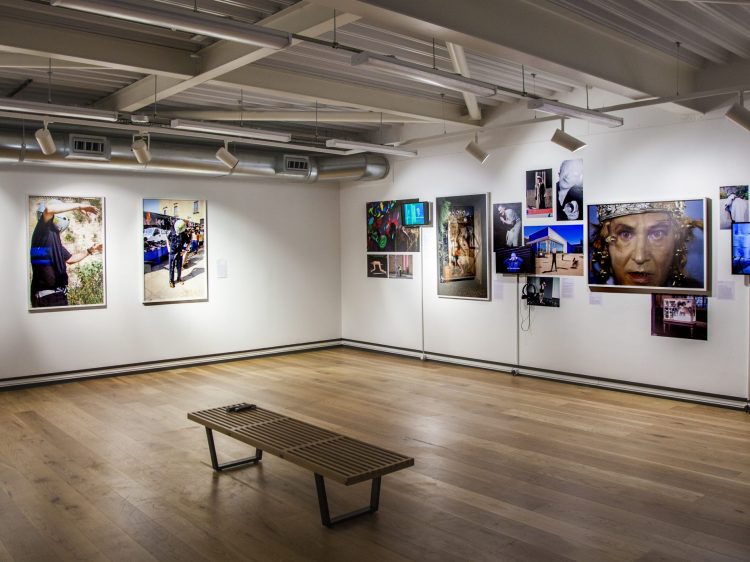
Aaron Williamson
This was Williamson’s largest solo project to date, featuring a brand new project ‘inspiration archives’, which had been commissioned by Attenborough Arts. Inspiration Archives brought together never before seen objects, artefacts, ephemera, film footage and photography, which document the lives of several historically overlooked personalities. Characters included; Deaf wrestler Cain in Chains; Charlotte Waterton, granddaughter of zoological illustrator William Waterton, and paraplegic traveller and explorer ‘Parachute Susan’ O’Sullivan, alongside various other inspirational historic figures of differing professions and backgrounds.
Accompanying the Inspirational Archive installation, Attenborough Arts Centre and Aaron Williamson also curate a retrospective of pas solo and collaborative projects including film, performance, objects, text and photography.
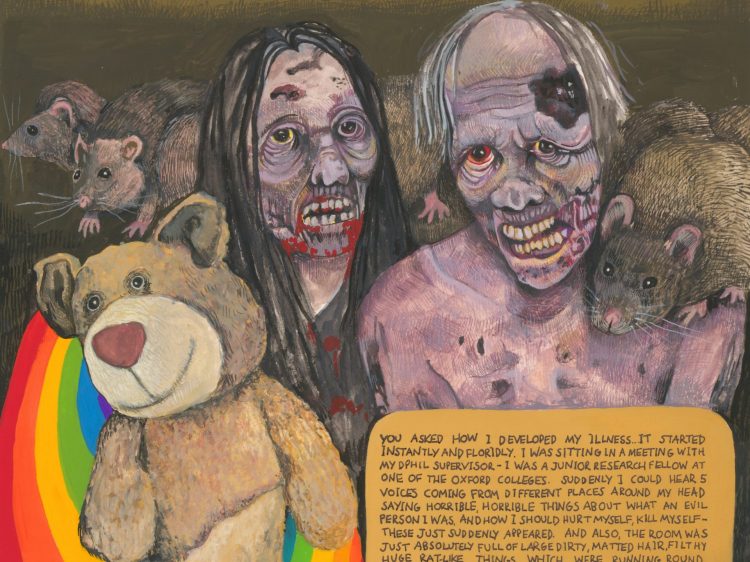
Mel Brimfield: Talking Heads
Talking Heads is rooted in a long period of research at the Department of Psychosis Studies at the Kings College Institute of Psychiatry, Psychology and Neuroscience, and the National Psychosis Unit at Bethlem Hospital, London. It explores the experiences of a national community of people living with and recovering from psychosis, and of the carers, nurses, neuroscientists, psychologists, occupational therapists, social workers and academics who work to understand and provide support.
Talking Heads is organised around a series of new works, highlights include:
UNGEZIEFER
The darkly comedic Ungeziefer focuses on a hapless voiceover artist in a recording studio attempting to make an abridged audiobook of Franz Kafka’s ’Metamorphosis’, directed by a bored producer. The narrative of Gregor Samsa’s nightmarish transformation into a giant cockroach, and the inability of his horrified family to deal with it, is taken as a loose metaphor for the onset of schizophrenia and its frequently alienating effects. The actor performs and re-performs truncated fragments of Kafka’s text, following directions from the sound booth. To his confusion, intermittent auxiliary voices begin to appear, critiquing his performance, apparently unheard by the producer. The catcalls and insults build to a yammering chorus of disapproval voiced by a cast of gibbering, shrieking voices competing for airtime.
XENOBATH
Xenobath is a collaborative work made with video artist Milo Creese, comprising collaged sampling of found audio and footage, CGI animation, filmed interview and performed action exploring accounts of the altered states of perception frequently associated with psychosis. A recurrent monologue at the centre of the piece takes the form of a collective hallucination articulated by an oscillating swarm of voices, all performed by actor David Cann. During her residency at Kings College Department of Psychosis Studies, Brimfield has had conversations with dozens of voice hearers and perceivers of phenomena unseen by the general population to gather ‘remembrances’ of unusual experience.
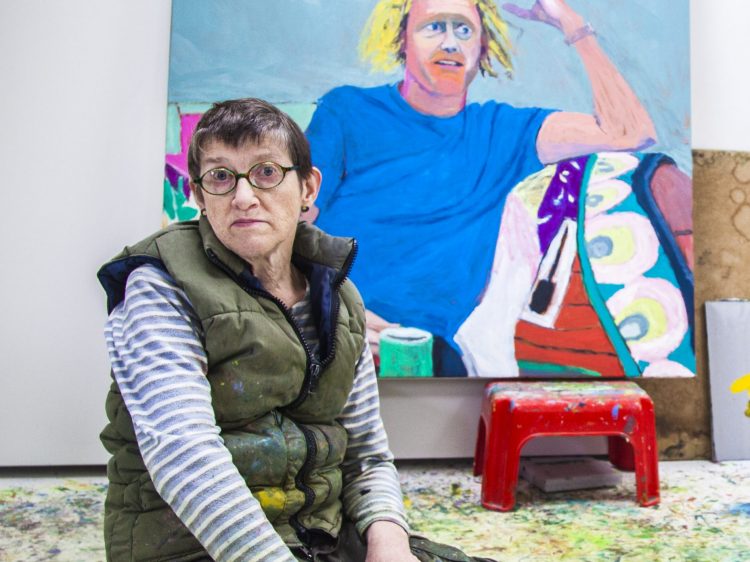
Lucy Jones: Awkward Beauty
Her landscape paintings evolve from hard earned studies made while in the landscape, placing a board on the ground to make either a drawing or watercolour.
In contract, her self-portrait works are critical examinations, and reaffirmations of self. Encompassing strength, humanity and wit, they are statements as much about the human conditions as her own.
Jones studied at Camberwell School of Art, followed by the Royal College of Art, where she won a Rome scholarship in 1982.
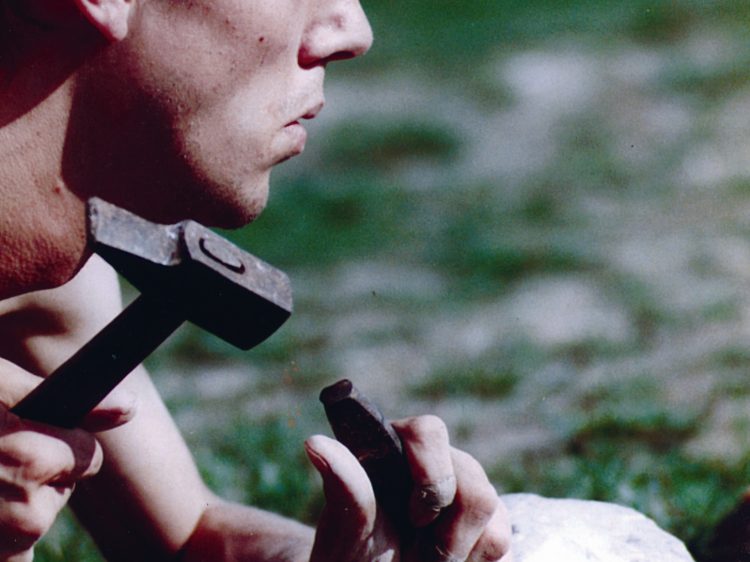
In Out There: Adam Reynolds, Sarah Carpenter, Nicola Lane, Terrence Birch, and Catherine Cleary
The exhibition places this new work alongside seldom-seen examples of Adam Reynolds’ own practice, archival material, and interviews. The exhibition sees The Adam Gallery, the pioneering artist-run, labyrinthine, housed in an ex-cobbler’s shop in south London, is re-imagined within the walls of Attenborough Arts Centre – re-affrming AAC’s and Shape’s commiment to supporting disabled artists.
Alongside Adam Reynolds, IN OUT THERE artists include Sarah Carpenter, who has a background in dance choreography and theatre directing. Carpenter’s inspiration comes from her experience of mental illness, likening her artistic process to Cognitive Behavioural Therapy (CBT). Nicola Lane explores themes of fragmentation and absence, informed by her peripatetic childhood and experience of disability. She has worked as an artist since graduating in 1972, her practice evolving from painting into sculpture, installation and filmmaking. Catherine Clearys’ paintings are populated by a diverse range of references to film, myths and stories, animation, folk memory and historical artefacts and are loosely in conversation with the history of English Neo-Romantic painting.
Adam Reynolds
Adam Reynolds (1959 – 2005) was a pioneering curator, activist, gallery owner, mentor and advocate, but first and foremost, a successful and influential artist. Reynolds worked with many different materials including lead, copper, steel and glass and moved from predominantly figurative pieces in the 1980s towards more abstract, geometric and larger work.
Reynolds, a disabled person, drew on his lived experience of muscular dystrophy throughout his career, influencing both his art and his politics. Adam used this knowledge, and commitment to increasing access to the arts for disabled people buy serving on the Board of Shape as Chair (1990-97). He also served on the Arts Council’s art panel (1989-94) and as a Trustee of Chisenhale Gallery (1991-2000). Reynolds involvement with these major organisations ran parallel with a key period disability rights movement, which saw the passing of key legislation such as the disability discrimination act (1997).

Amartey Golding
During his childhood, Golding’s family moved house regularly, not only to various contrasting communities in London, but also overseas to Ghana in West Africa. These experiences of continuous fluidity and movement have undoubtedly influenced Golding’s artwork. Golding premiered two new films alongside his 2016 film Chainmail which forms a loose portrait of his younger brother, Solomon, the first black British male dancer of The Royal Ballet.
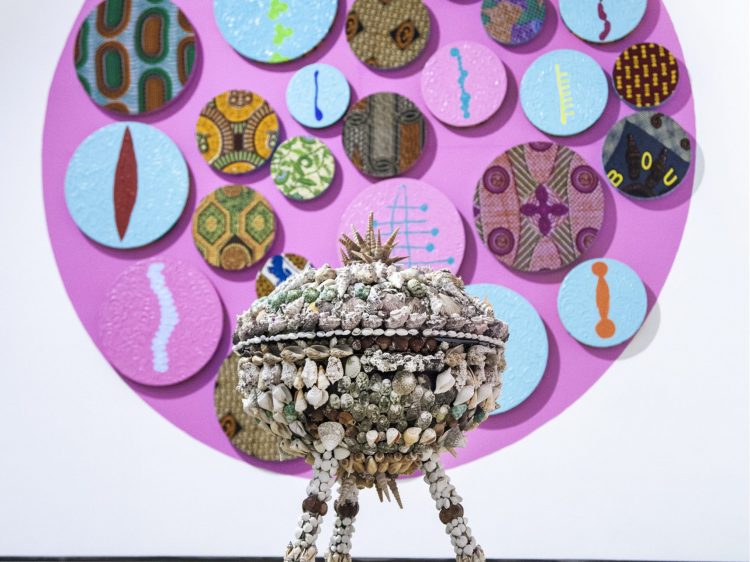
Criminal Ornamentation, by Yinka Shonibare
The exhibition is not about the hierarchy of taste as it manifests between high and low culture, but rather about the cultural and political manifestation of pattern within craft, sculpture, painting, costume design, film and photography. Criminal ornamentation celebrates the impolite and apologetic display of patter, repetition and colour as freedom from the elitism of good taste, rejoicing the radical deviancy of pattern.
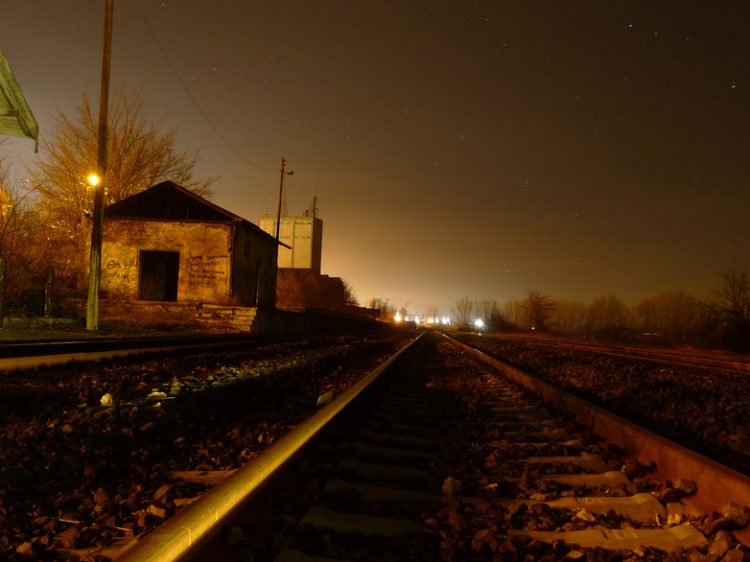
Altered Landscapes, by Juan delGado
For this exhbition, delGado travelled to Greece, North Macedonia and Calais to film, photograph, and record the journeys taken by Syrian refugees. delGado has not filmed these ‘invisible’ people who proliferate our media, but the places they have passed through. There are traces of their existence, fragmented experiences, fleeting moments and marks left on the land as they pass through to find safety.
Using video, photography, lighting and sound, Altered Landscapes encourages you to open up contemplation and discussion about the current situation in Europe, a place that has become filled with militarised border control.
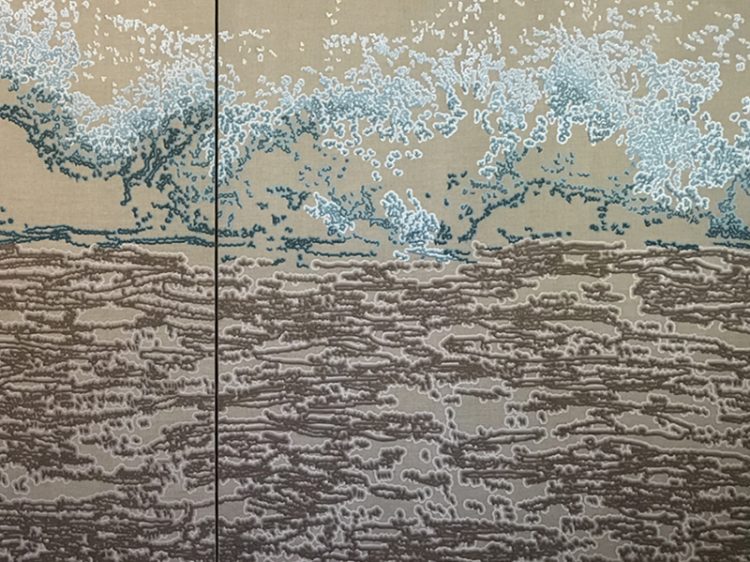
Steffie Richards: Ebb and Flow
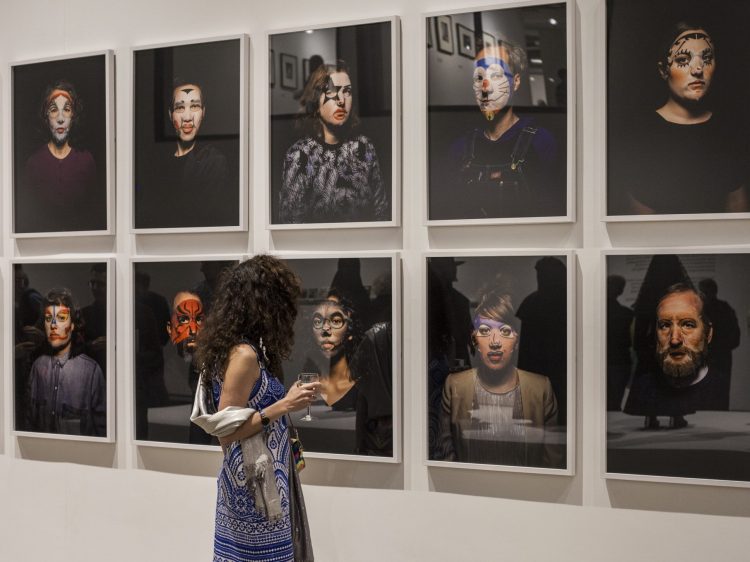
Laura Swanson
Laura Swanson examines the behaviour of looking at physical difference, working across media including drawing, installation, photography, and sculpture. Pulling from multiple sources – art history, commercial display, critical theory, personal experience, photography, popular culture, sociology – her visual language is simultaneously playful and serious, simple and intricate, inviting and disruptive.
The exhibition will take autumn 2017 in AAC’s new gallery, a space dedicated to international contemporary art. AAC is one of the largest public galleries in the midlands, producing high quality exhibitions and commissioning exciting new work. AAC is committed to supporting innovative, critically challenging, and socially engaged artists.

Plant Culture
Through its examination of plant orientated artwork, Plant Culture will question the privileging of human experience (that of the artist) over the existence of a nonhuman subject. The exhibition looks at plant-human dynamics in a variety of different ways, for example the still life, where seemingly inanimate objects are impregnated with human symbolism.
The exhibitions design and layout will draw comparisons between botanic gardens, (collections of plants brought together for study and pleasure) and collections of contemporary art. The work will be organised around four perspectives: Allegory, Reality, Investigation and otherness.
The exhibition will be curated by, Attenborough Arts Centre. To accompany the exhibition, University of Leicester’s Department of Biology support talks and tours of the exhibition, and University’s Botanical Gardens, two organisations will also co-produce a series of creative learning classes and workshops.
Artists
Gilbert & George, Marc Quinn, Anya Gallaccio, Andy Goldsworthy, Janice Kerbel, Georgie Hopton, Simon Starling, Michael Landy, Hayley Newman, John Newling, Lois Weinberg and John Stezaker, Annie

Lucy and Jorge Ortega
The Ortas’ practice is driven by extensive research into the forces shaping our environment: the availability of food and water, the destruction of the Amazon rainforest and subsequent species loss, and global climate change.
This new solo presentation brings together artwork relating to the Ortas’ ongoing concern with human migration, escape and survival from environmental and political catastrophe. It includes many of their characteristic social sculptures, assemblages of functional objects such as customised buoyancy aids, water flasks, and individually made sleeping bags.
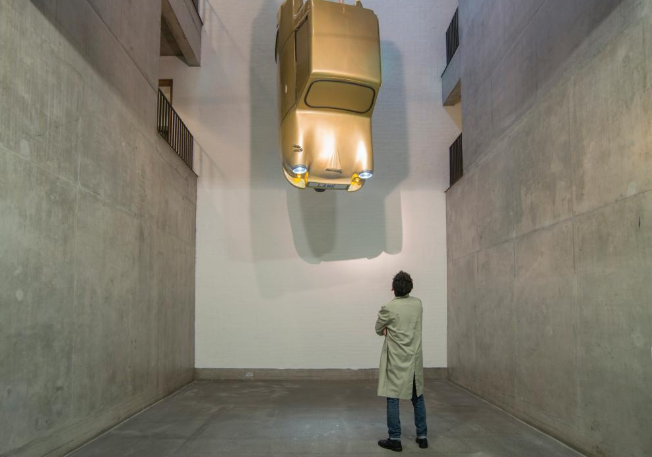
Art, Life, Activism: Contemporary art and the politics of disability
Drawing together works by artists’ Tony Heaton, Noemi Lakmaier, Aaron Williamson, Bobby Baker, and photographer David Hevey, the collection explored various aspects of disability politics. Using sculpture, performance, film, and drawing to address a diverse range of concerns, they explore political activism, the labour market, medical treatment, access, sexuality, and hidden history; they challenge the social, economic and cultural forces that characterise disability.
